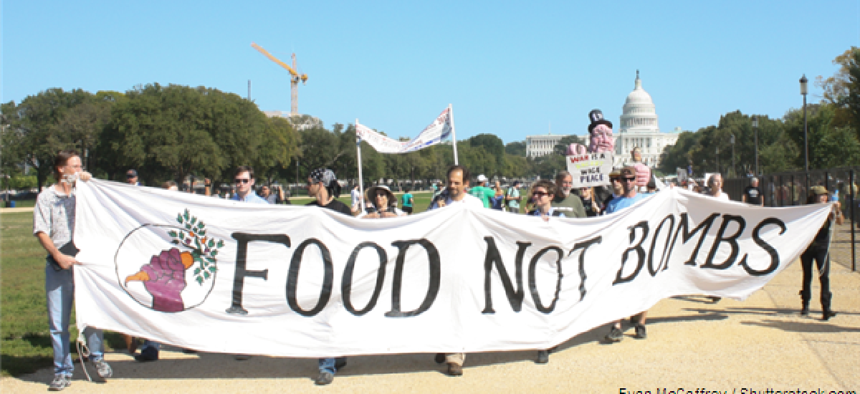Crowdsourcing video surveillance can work both ways

The Park Service has to be innovative when monitoring large crowds, so it uses video streams from the crowds themselves and shares the video with other agencies.
There is some irony involved when crowdsourcing for situational awareness involves gathering data directly from those being watched.
Take Occupy D.C., part of the Occupy movement, an international protest against social and economic inequality. Participants in Occupy D.C. inhabited McPherson Square and Freedom Plaza from October 2011 until they were evicted in February 2012. The U.S. Park Police used video footage supplied by Occupy D.C. to monitor the group, David Mulholland, commander of Technology Services for the Park Police, said during a session at the GovSec conference in Washington, D.C.
The Park Police are tasked with “icon protection” — buildings and landmarks — mostly in downtown D.C. and Ellis Island, said Capt. Charles Guddemi, commander of Special Events. Its members watch for air and water attacks, explosives, intrusions, surveillance as well as chemical and biochemical weapons, he said. The Special Events group deals with large-scale demonstrations and, of course, special events. And the agency is fairly small; there are 641 officers in the service and only 400 in Washington.
The only way to have situational awareness is to rely on technology, said Guddemi. Because the Park Police are tasked with monitoring icons, they need to make use of existing infrastructure or tactical technology to get the job done. Redundant technologies are used in case of failure of a particular type of technology — say, a major fiber optic cable being cut, shutting down wireless video streaming.
There’s another wrinkle as well: when it comes to special events monitoring, “you can’t see everything,” said Mulholland. There is too much space, too many people and too many hidden areas, he said.
More important, the brain can only focus on one thing at a time, said Mulholland. “Our brain, no matter what, isn’t capable of seeing everything as it really is,” he added. Change blindness (the failure to notice an obvious change) and inattentional or perceptual blindness (the failure to notice the existence of an unexpected item), describe failures to notice something that is clearly visible once we know to look for it. “If you are paying attention to one thing it’s almost impossible to pay attention to something else in the same environment,” said Mulholland.
Given the Park Police’s small numbers, the agency relies on partnerships with other agencies to share resources, gaining access to more eyes and ears. The Park Police shares its videos with up to 30 partner agencies. “The more people are viewing a video, the more likely someone is to see something,” said Mulholland.
That includes video streamed from event participants and the public on social media. In the case of Occupy D.C., two protesters videotaped events and uploaded the files to UStream, a live streaming video site, from which the agency downloaded the videos to analyze.
Occupy D.C. was aware of the Park Police’s use of their video and cooperated with the agency, said Park Police Capt. Phil Beck. “It worked very much to our benefit,” he said.
With Occupy D.C. there were “a lot of good lessons for us,” said Mulholland. “Maybe we are overthinking” when it comes to finding the right video surveillance technology and addressing situational awareness, he said.
NEXT STORY: The coolest new public-sector tech at FOSE





